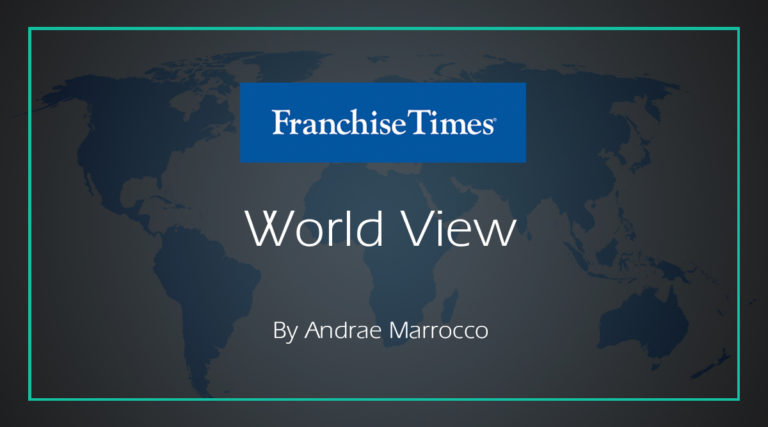
This article was first published online by Franchise Times on January 27, 2021 and subsequently published in the February 2021 print edition.
When it comes to franchising, some consider 2020 to be a year characterized by survival of the fittest, while others hold that surviving 2020 was more about adapting and pivoting. Perhaps it was a combination of both. Whatever the case may be, there was a fair amount of consolidation and diversification in the international franchise scene during 2020.
On the micro-economic level, many franchise systems witnessed a consolidation of stronger franchisee operators acquiring their weaker-performing counterparts. This resulted in an increase in the number of multi-unit operators (and the number of units operated by them) across various jurisdictions, which in many cases produced more robust multi-unit operators and more efficient franchise systems.
“Successful franchisees within a franchise system know what the lacking elements and deficiencies are in an underperforming unit. This creates confidence in their decision to acquire other underperforming franchise units within their system,” said Mike Bidwell, CEO of Neighborly. One of the important considerations for franchisors in their consenting to the acquisition of additional units by existing franchisees is the analysis of whether the franchisee is optimizing their existing units. Otherwise, economic inefficiencies will likely extend to the new units.
Multi-brand acquisitions were also a topic of interest in 2020. A prime example is NPC International, a multi-brand franchisee of Pizza Hut and Wendy’s whose suitors included other multi-brand operators. The context was a distressed sale, sparked by NPC’s Chapter 11 filing.
Multi-brand acquisitions carry the additional complexities of receiving approval from each of the franchisors to operate multiple, often competing, brands and subsequently operating all franchise units under a patchwork of covenants in compliance with the various franchise arrangements. One of the delicate matters in this regard is balancing the level of dedicated resources for each brand in a manner that is consistent with the franchise agreements negotiated by the previous multi-brand owner.
“These operators are able to benefit from economies of scale in back office and other infrastructure, and the increased boost in demand for supplies can often result in reduced supply cost. Those advantages, together with other factors, can ultimately make for stronger franchisees all around,” said Jim Hartenstein, of Hartenstein Global Consulting and former senior VP of international at Little Caesars and Wendy’s.
For international franchisors, the ongoing trends of consolidation and diversification among their franchisees has no doubt been advantageous, especially from the perspective of growing the number of successful and sophisticated franchisees within their system. Having said that, the downside — specifically for the multi-brand franchisees — is that franchisees may not commit the same level of resources into all the units and brands that they operate.
“This is something to be considered carefully by international franchisors when faced with the request to operate multiple units or brands, including the conditions upon which such consent is granted,” said Hartenstein. “Beyond that, international franchisors faced with travel restrictions should also establish protocols to closely monitor the agreed conditions by way of more robust reporting and business plans.”
This leads back to the discussion around the challenge of undertaking in-person due diligence during COVID-19 (referred to in last month’s column). More particularly, if international franchisors are unable to send their representatives to the franchisee’s local jurisdiction to gain an understanding of whether the candidate has the bandwidth to take on additional units or brands, it can be challenging to make an informed decision. This conundrum is exacerbated by the fact that the decision really is a double-edged sword. Clearly, permitting franchisees to take on too many units or brands can end in disaster. However, if done well, it could be a great win for the both the franchisee and the franchisor.
Going deeper
On the international development front, one of the consolidation plays adopted by franchise systems in 2020 included the decision to focus on, and go deeper into, select jurisdictions that made sense for those franchisors. With the increasing challenges posed by the pandemic, some franchisors took the opportunity to firm up the territories in which they had already expanded. For some franchisors, such as Neighborly, it has been a steady strategy to keep its expansion efforts in the United Kingdom and Germany, where it has an existing presence and is looking to expand further with its other brands.
There were also some interesting deals in the franchise mergers and acquisitions space during 2020. One of the notable transactions was the acquisition of Dunkin’ by Inspire Brands. Neighborly, meanwhile, acquired ShelfGenie, HouseMaster and Dryer Vent Wizard in three separate transactions. These sorts of roll-ups have been increasing, particularly over the past two to three years, as private equity firms continue their active investing in franchise systems.
A key ingredient to the success of roll-up transactions of this sort revolves around the purpose and longer-term sustainability of the investment. According to Bidwell, “where the ultimate strategy results in an ultimate benefit to the customer — or some other fundamental value is created from the transaction, i.e., that goes beyond financial engineering — the venture and investment will tend to be more successful and rewarding all round.”
Unsurprisingly, many of the transactions in 2020 reflected distressed sales of brands and concepts that acquirers considered had long-term appeal and sustainability, for example, because of their iconic status or by virtue of the novelty/trend potential of the product or service that they offer. It was also interesting to see the dichotomy of targets: some had made significant pivots and were performing in the midst of the pandemic, and others had not adapted or pivoted, but were an acquisition in anticipation of the end of the pandemic.
